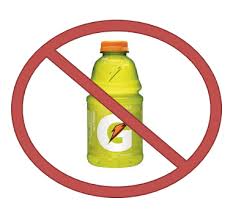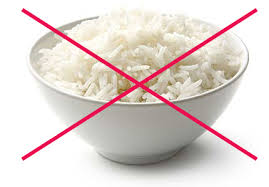Macronutrient Setup For Certain Lifestyles (Part 1)
- Elliot Wilson

- Oct 4, 2020
- 4 min read
So now we've discussed what the macronutrients are and what each of them does when it comes to keeping a healthy body and allowing you to develop a good physique. In this series, Macronutrient Setup for Ideal Diets, I'll show you different ways you can arrange your macros depending on your activity level, in order to stay at a healthy weight and look good.
So when it comes to changing your physique, no matter what kind of physique you want, it all starts from the inside no matter what your activity level is. Whether you sit at a computer all day, or you do manual labor alongside going to the gym, you have to prioritize your diet in order to give what your body needs in all of those scenarios. We'll start off at the lowest end, those of you that don't workout and have a sedentary job. I'm not saying this is bad! Some people can't workout or are unable to do certain physical activities. That's perfectly fine! But those sorts of people can still look good if their Macros are put together the right way.
The first thing you need to do when setting up the macros is to look at how much energy you're expending on a daily basis. No, I'm not talking about calories, I'm talking about carbs. Since carbs are the body's main source of energy, you need to figure out how much you need for your lifestyle. Eat too many carbs and you store fat. Eat too little of carbs, you can breakdown muscle if you're lifting weights as your body will have to find something else to break down quickly to produce energy, more on that aspect later on. So for the sedentary person, obviously your carb intake is going to be very low. But does that mean you NEVER get to eat carbs? Of course not. At some point, you have to eat carbs as your brain needs some glycogen to operate in a healthy way. We'll talk about when to do that in a minute. As far as how many carbs? Start with less than 30, just so you can deplete your glycogen levels quickly.
Now, even though this is a small amount, this should NEVER include a fast-digesting carb. Sugar, candy, Gatorade, etc. The point of low carbs is to keep insulin levels low, and if you even have one sip of Gatorade or one bite of candy, you've derailed the whole effect. These 30g of carbs are mainly to account for the very small carb amounts that come from general low-carb foods including peanut butter, certain cheeses, and certain brands of heavy whipping cream.
Since your liver glycogen will deplete, your body will then start creating energy from where you want it to, store body fat! To amplify this effect, make sure that you're eating fat-filled foods to keep your body in a fat-burning state. Remember, the body adapts. If you're eating mostly fat, your body will get the hint to start burning in more efficiently, ESPECIALLY when your carbs are really low. High-fat and low-carb foods include meat, cheese, butter, eggs, and plenty more. Now, don't go overboard on fat intake. Too much fat will be hard on your digestive system as fats are slow to digest. Eating fat-filled foods too often will back up your digestive tract, and give you the appearance of looking fat due to bloating and inflammation.
Now of course, onto protein intake. Even though you're not exhausting your muscles your body still needs the protein to maintain the muscle you have, and to perform its many other functions for your body. Now, you don't want too much protein if you're not working out as this can be hard on your digestive system and can also dehydrate you over time. The ideal range for those of you with a sedentary lifestyle is 0.5g to .8g of protein per pound of bodyweight. That's enough to keep you healthy, without losing muscle or giving your digestive system a hard time.
I mentioned earlier there comes a point when you need to have carbs when you're doing a very low carb diet, no matter who you are. One, you want to keep your brain healthy. Two, you still want your body to learn how to utilize carbs. Three, your metabolism drops too low if you're on a low-carb diet for too long. Also, if you never have carbs (think Keto Diet) you detrain your body on how to utilize carbs the right way. Don't we want to make sure our bodies can use all the Macronutrients the right way? Hell yea we do! So when you take in your carbs, you actually get to have some fun. Take in fast-digesting carbs, aka the tasty and addicting food that we always want to eat. The quick digestion rate of these carbs will spike insulin levels and crank up the metabolism. This tricks the body into thinking it's still got all the nutrients it needs and allows your metabolism to keep cranking the fat loss when you drop the carbs again.
However, you only get ONE NIGHT to take in your carbs. Taking in your carbs at night gives you a lower chance of having the carbs get stored as fat because cortisol isn't elevated (we'll get into that down the road). The reason you only do one night is that you have a sedentary lifestyle, not to mention most of you will go all out when wolfing down those carbs, so your metabolisms will be just fine when you hit another stretch of low-carb days. Which leaves most of you with one question. How often to I get to have my one-night refeed? You should be doing this between 7-14 days. I know that's a big window, but you're going to have to look at yourself in an honest way during this. If you do it every 7 days and aren't dropping fat, maybe it's time to extend your low-carb period and adjust from there.
So there you have it. Even if you don't do anything physical in your daily life, at least you get to enjoy carbs every once in a while and also don't have to starve yourself on your low-carb days since you'll be eating fats and proteins to keep you satiated. Now, once you start going to the gym and adding in other physical activities to your lifestyle, your carb intake will have to change! In the next part of this series, we'll talk about the Macro setup for people who are just starting to workout.
















Comments